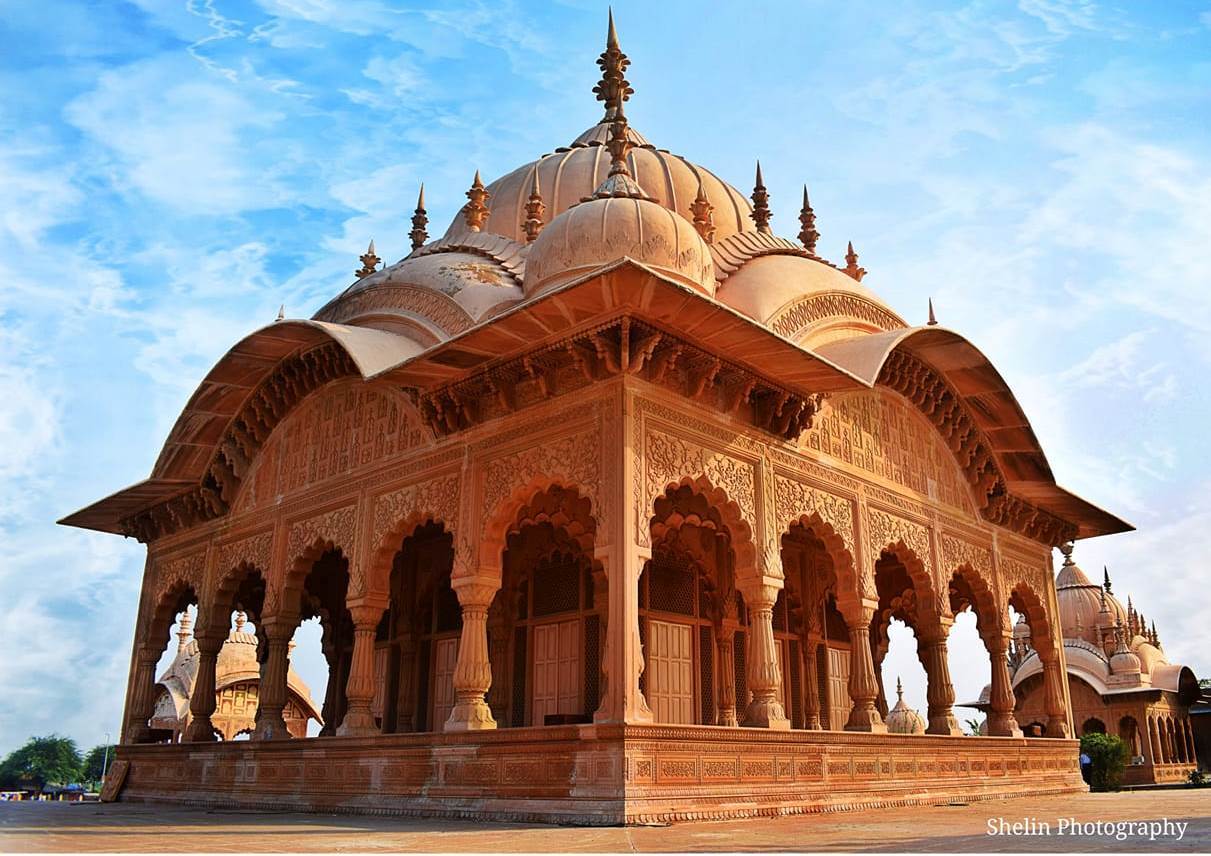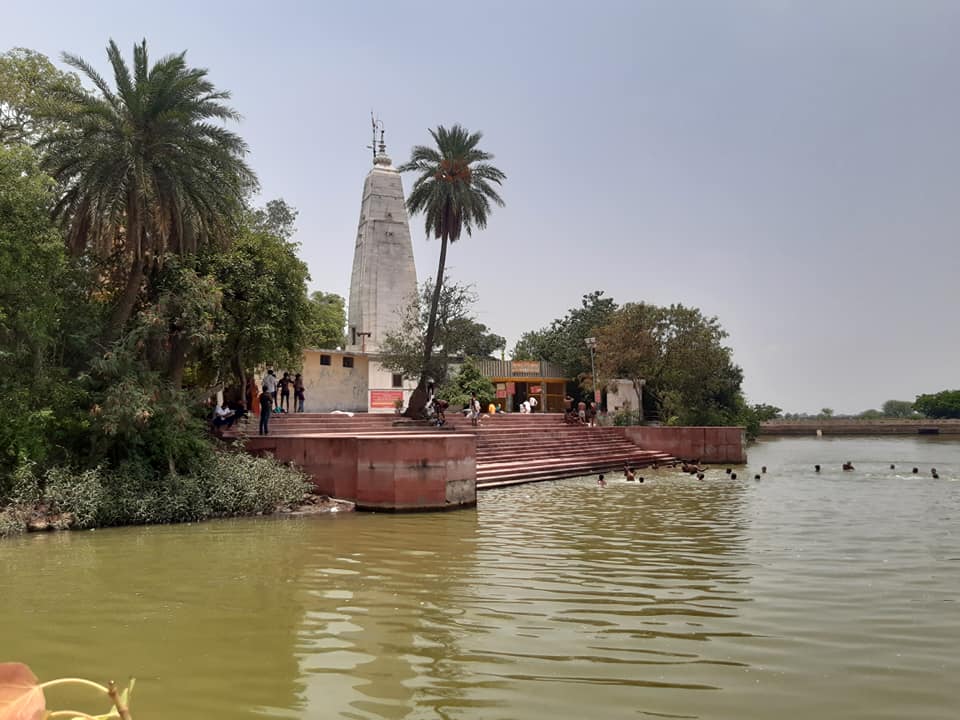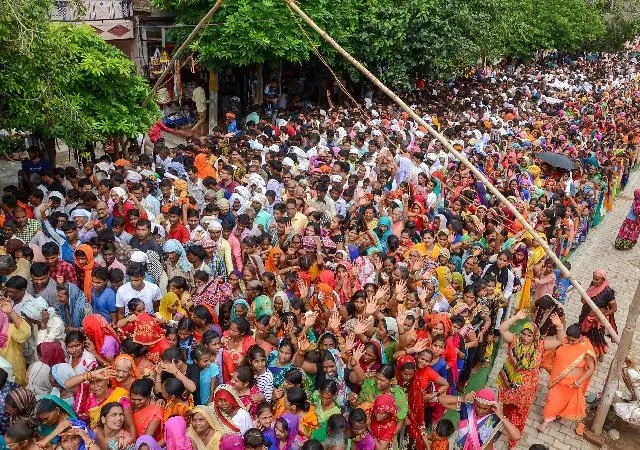2024.10.04 (Vrindavan Today News): There is a growing resentment among the devotees performing Govardhan Parikrama, as there is an illegal entry ban at Kusum Sarovar. This reservoir is an ancient and spiritually significant site situated on the Govardhan Parikrama path, where devotees would visit on the way to their parikrama earlier. Standing as a testament to the artistic and cultural grandeur of Bharatpur’s royal heritage, this stunning reservoir and its intricately designed cenotaphs primarily remain locked, leaving devotees disappointed with only a distant view.
Located near Mathura, Kusum Sarovar is linked to Lord Krishna and Radha’s divine pastimes, believed to be a witness to their legendary kusum leela (play amidst flowers). Additionally, it holds the final resting place of Maharaja Surajmal of Bharatpur, adding another layer of historical significance. These monumental structures showcase an extraordinary level of architectural finesse that has captivated visitors for centuries. Despite multiple conservation initiatives by the Department of Tourism and the Archaeology Department, which have poured in substantial funds through the Mathura-Vrindavan Development Authority, the reservoir’s doors are rarely opened for the public.
In recent years, the Uttar Pradesh Braj Teerth Vikas Parishad also commissioned a light and sound show to highlight the splendor and history of Kusum Sarovar. While this attraction has the potential to draw thousands of tourists from distant regions, it is usually only activated during visits from high-profile VIPs, leaving regular pilgrims with an empty experience. For most visitors, the grand main entrance remains locked, barring access to the cenotaphs and the reservoir’s tranquil surroundings.
This restrictive approach has fueled growing resentment among devotees and local residents. “Most pilgrims passing through Govardhan Parikrama see the imposing structure from afar, but are forced to leave without being able to fully engage with its sanctity and beauty,” explains Sita Devi Agrawal, a devotee, who visit Govardhan every month from Gwalior. “It’s useless to spend so big amount on this monument, if devotees can’t enter inside, but only a privileged few can enter,” she added, capturing the prevailing sense of frustration.
Local devotee Ravi Kumar Singh, echoes this sentiment, pointing out the impact on the nearby economy and community. “People come with a longing to connect with the history and devotion that Kusum Sarovar symbolizes, but seeing it constantly locked makes them feel excluded,” he said. Many residents argue that the restrictive practices of the authorities limit both public access and the site’s cultural outreach.
Apurva Chaudhary, a resident of Govardhan, criticizes what he describes as an “arbitrary approach by the officials” who have closed off the Sarovar to locals and pilgrims alike. “It is time for the government to open the gates of Kusum Sarovar to the public,” says Abhiman Singh from Raal. “If it is accessible to everyone, the effort and funds that went into preserving its beauty can be truly appreciated by the masses,” he added, emphasizing that open access would allow people to better understand and connect with this historical marvel.
This ongoing issue at Kusum Sarovar reflects a broader dilemma seen across many historic and religious sites, where significant restoration funds are invested, yet access remains restricted. Pilgrims and devotees who come seeking connection are met with barriers, despite the government’s promises of accessibility. With growing calls to address this discrepancy, perhaps the time has come for officials to allow the public full access to the treasures within Kusum Sarovar and honor the spirit in which such monumental investments were originally made.





